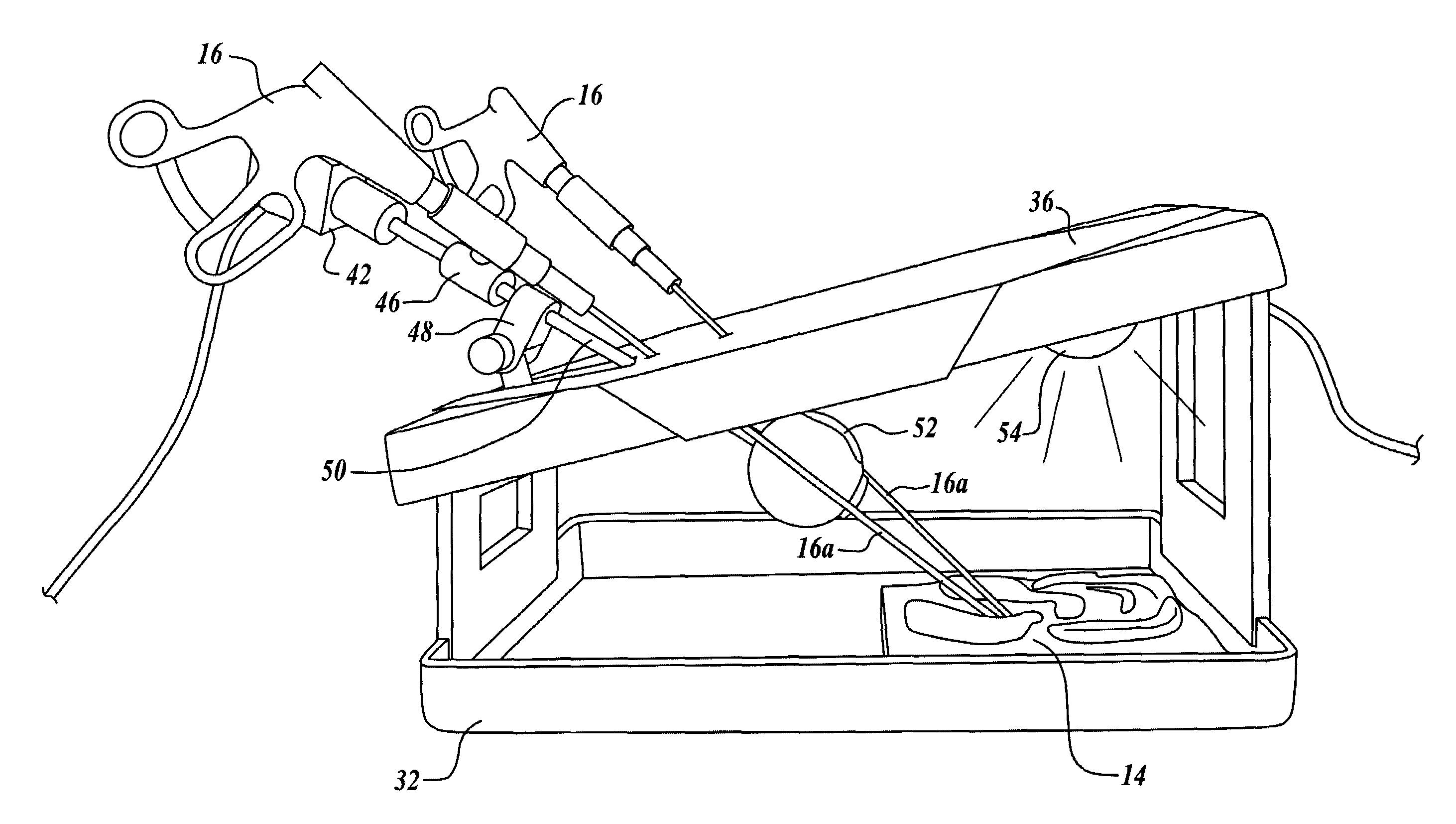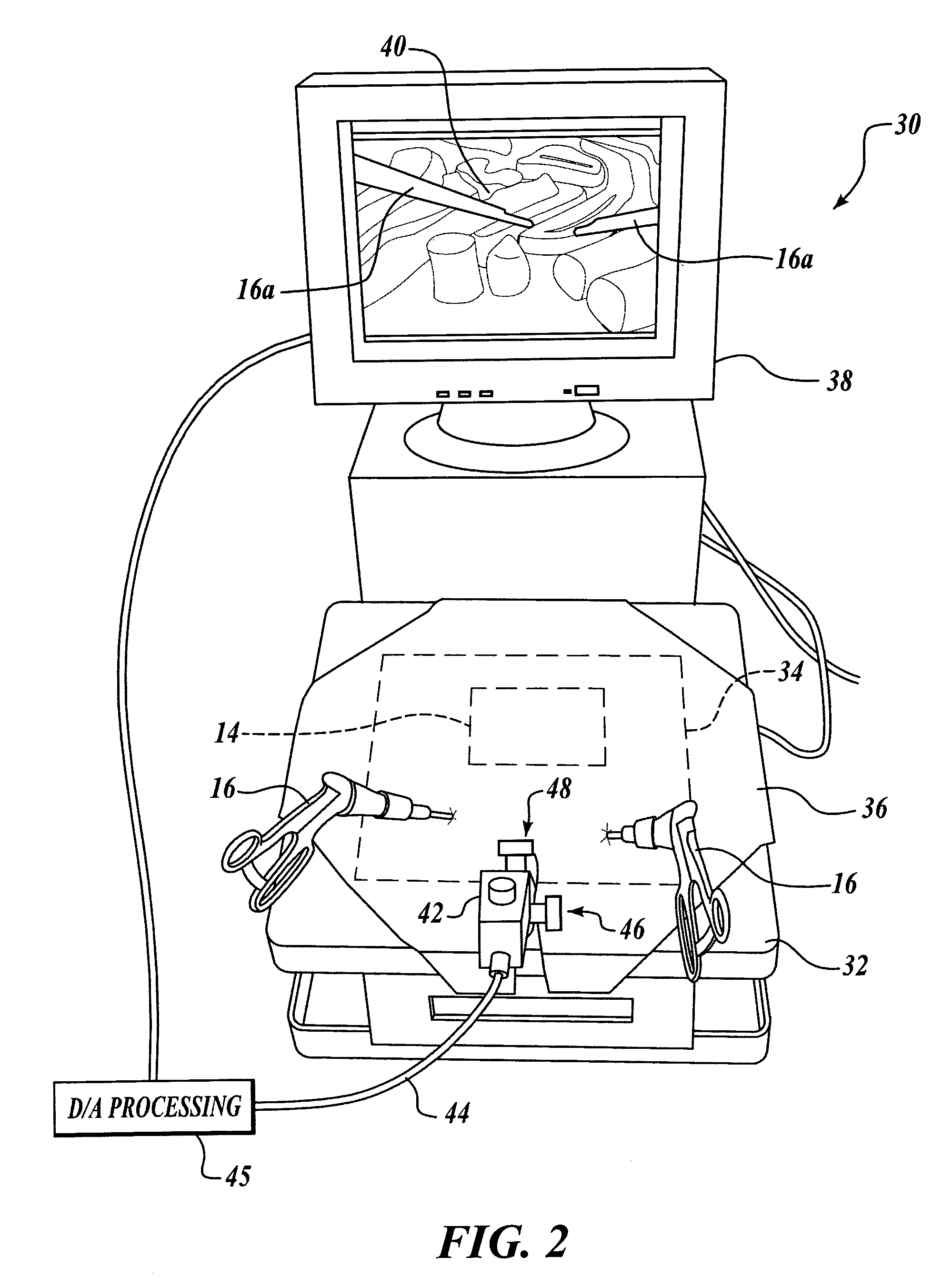Laparoscopic and endoscopic trainer including a digital camera
a training equipment and digital camera technology, applied in the field of surgical training equipment, can solve the problems of inconvenient use of training environment, inability to translate hand eye coordination skills useful in conventional surgery into endoscopic surgery, and small video camera that can be disposed at an internal surgical field, etc., to achieve the effect of enhancing endoscopic skills training
- Summary
- Abstract
- Description
- Claims
- Application Information
AI Technical Summary
Benefits of technology
Problems solved by technology
Method used
Image
Examples
Embodiment Construction
[0038]FIG. 1 schematically illustrates a prior art surgical trainer 10 that is configured for video endoscopic surgery training. Trainer 10 includes a housing 12. An anatomical structure 14 is disposed within housing 12, such that portions of housing 12 prevent a trainee from clearly viewing anatomical structure 14. Housing 12 includes a plurality of openings 18 into which surgical instrument 16 can be inserted. Preferably, surgical instruments 16 are endoscopic suturing instruments such as an ENDO STITCH endoscopic reciprocating suturing instrument manufactured by U.S. Surgical, Inc. Trainer 10 includes a reflector 20 in which an image 22 of anatomical structure 14 can be observed by a trainee. Note that distal ends 16a of surgical instruments 16 can be seen within image 22. Surgical trainer 10 thus provides a trainee with an opportunity to practice endoscopical surgical techniques such as suturing and knot tying, as well as gaining experience in two-dimensional pattern recognition...
PUM
 Login to View More
Login to View More Abstract
Description
Claims
Application Information
 Login to View More
Login to View More - R&D
- Intellectual Property
- Life Sciences
- Materials
- Tech Scout
- Unparalleled Data Quality
- Higher Quality Content
- 60% Fewer Hallucinations
Browse by: Latest US Patents, China's latest patents, Technical Efficacy Thesaurus, Application Domain, Technology Topic, Popular Technical Reports.
© 2025 PatSnap. All rights reserved.Legal|Privacy policy|Modern Slavery Act Transparency Statement|Sitemap|About US| Contact US: help@patsnap.com



